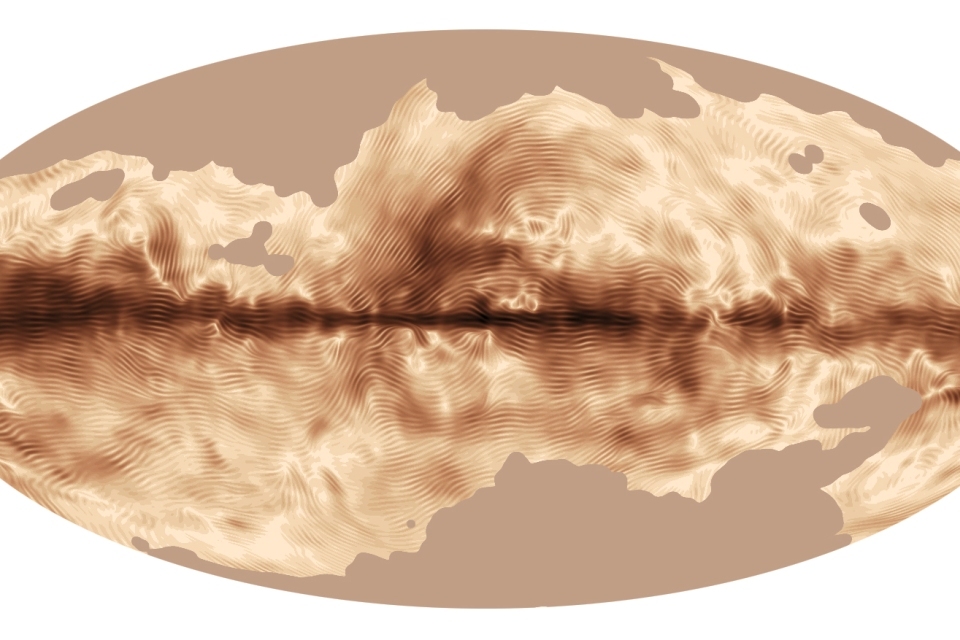Planck takes magnetic fingerprint of our Galaxy
The magnetic field of our Milky Way Galaxy as seen by Europe’s Planck satellite.

The magnetic field of our Milky Way Galaxy as seen by ESA’s Planck satellite
Our Galaxy’s magnetic field is revealed in a new image from Europe’s Planck satellite. This image was compiled from the first all-sky observations of ‘polarised’ light emitted by interstellar dust in the Milky Way.
Light is a very familiar form of energy and yet some of its properties are all but hidden to everyday human experience. One of these – polarisation – carries a wealth of information about what happened along a light ray’s path, and can be exploited by astronomers. In particular, polarisation may reveal the existence and properties of magnetic fields in the medium light has travelled through.
The map presented here was obtained using detectors on Planck that acted as the astronomical equivalent of polarised sunglasses. Swirls, loops and arches in this new image trace the structure of the magnetic field in our home galaxy, the Milky Way.

The magnetic field of our Milky Way Galaxy as seen by ESA’s Planck satellite
In the new Planck image, darker regions correspond to stronger polarised emission, and the striations indicate the direction of the magnetic field projected on the plane of the sky. Since the magnetic field of the Milky Way has a 3D structure, the net orientation is difficult to interpret if the field lines are highly disorganised along the line of sight, like looking through a tangled ball of string and trying to perceive some net alignment.
However, the Planck image shows that there is large-scale organisation in some parts of the Galactic magnetic field.
The dark band running horizontally across the centre corresponds to the Galactic Plane. Here, the polarisation reveals a regular pattern on large angular scales, which is due to the magnetic field lines being predominantly parallel to the plane of the Milky Way.
The data also reveal variations of the polarisation direction within nearby clouds of gas and dust. This can be seen in the tangled features above and below the plane, where the local magnetic field is particularly disorganised.
Planck’s Galactic polarisation data are analysed in a series of four papers just submitted to the journal Astronomy & Astrophysics, but studying the magnetic field of the Milky Way is not the only reason why Planck scientists are interested in these data. Hidden behind the foreground emission from our Galaxy is the primordial signal from the Cosmic Microwave Background (CMB), the most ancient light in the Universe.
The brightness of the CMB has already been mapped by Planck in unprecedented detail and scientists are now scrutinising the data to measure the polarisation of this light. This is one of the main goals of the Planck mission, because it could provide evidence for gravitational waves generated in the Universe immediately after its birth.
UK involvement in Planck
The UK is playing a major role in the Planck mission. A number of UK institutes and companies form part of the consortium that built the two focal plane instruments, HFI and LFI. The Jodrell Bank Observatory at The University of Manchester produced critical elements of the LFI receiver modules.
Cardiff University, STFC RAL and SEA were involved with hardware development for HFI, while various UK research groups including Imperial College London and University of Cambridge form the London Planck Analysis Centre and Cambridge Planck Analysis Centre. These groups are involved with data analysis and simulation for the HFI data analysis and simulation software.